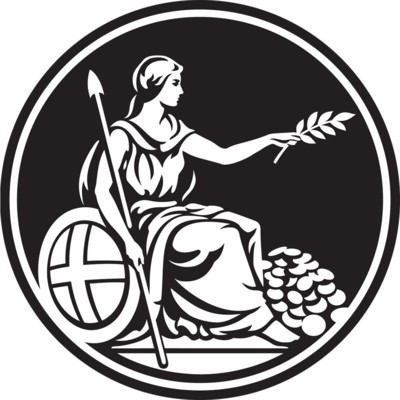Inflation's Tug-of-War: The UK Faces Uncertainty Ahead of Rate Decisions
April 16, 2025, 9:41 pm

Location: United Kingdom, Wales, Newport
Employees: 1001-5000
Founded date: 1996

Location: United Kingdom, Northern Ireland, Lisburn
Employees: 201-500
Founded date: 1981

Location: United Kingdom, England, London
Employees: 1001-5000
Founded date: 1694
Inflation is a beast that refuses to be tamed. In March, it stood at 2.6 percent, a slight dip from February's 2.7 percent. But don’t let the numbers fool you. The landscape is fraught with uncertainty. The Bank of England is on the brink of a critical decision regarding interest rates, and the stakes are high.
The recent inflation figures have left policymakers in a tight spot. The Office for National Statistics (ONS) reported that services inflation hit 4.7 percent. This is a thorn in the side for the Bank, which aims for a target of just 2 percent. The numbers tell a story of stubbornness. Inflation is like a stubborn mule, refusing to budge despite the efforts of policymakers.
Chancellor Rachel Reeves pointed to “encouraging signs” in the data. She believes government initiatives are making a difference. The minimum wage has been boosted, fuel duty frozen, and free breakfast clubs rolled out in primary schools. But families are still feeling the pinch. The cost of living remains a heavy burden.
The latest inflation data is the last the Bank will see before its May 8 interest rate decision. The clock is ticking. Economists are already predicting a 25 basis point cut in rates. The current rate sits at 4.5 percent. A cautious approach is the name of the game. Governor Andrew Bailey is leading the charge, advocating for a gradual easing of rates.
But the future is murky. Predictions suggest inflation could spike again in April. Capital Economics warns that the dip from 2.8 percent in February to 2.6 percent won’t last. They forecast inflation could rise to around 3.5 percent in the coming months. This volatility is like a rollercoaster ride, with twists and turns that leave everyone dizzy.
The looming threat of President Trump’s tariffs adds another layer of complexity. These tariffs are expected to have a deflationary effect on prices in the UK. Economists believe cheaper goods from abroad could flood the market, dampening inflation. Yet, the impact of these tariffs remains unclear. The economic environment is like a stormy sea, unpredictable and turbulent.
The Bank’s last forecast estimated inflation could peak at 3.75 percent this year. Meanwhile, the Office for Budget Responsibility (OBR) offers a more conservative estimate of 3.2 percent. The divergence in these forecasts highlights the uncertainty that grips the economy. It’s a tug-of-war between optimism and caution.
Wages are also a factor in this equation. Average weekly earnings grew by 5.9 percent in the three months leading up to February. This growth could pressure the Bank’s decision-making. Higher wages often lead to higher prices, creating a cycle that’s hard to break. The economy is like a tightly wound spring, ready to snap at any moment.
The national insurance hike introduced by Chancellor Reeves adds to the pressure. Employers are likely to pass these costs onto consumers, raising prices further. This is a classic case of costs trickling down the supply chain, squeezing consumers at the end. The burden is heavy, and the outlook is uncertain.
As the Bank prepares for its decision, all eyes are on the Monetary Policy Committee. Will they revise their high inflation estimate? The answer could shape the economic landscape for months to come. The tension is palpable. The stakes are high.
Market analysts are pricing in multiple interest rate cuts this year. Many believe the deflationary effects of tariffs will outweigh inflationary pressures. But the future remains uncertain. The economic environment is a wild card, and no one knows how the next hand will play out.
In this game of economic chess, every move counts. The Bank of England must navigate a complex web of factors. Rising energy prices, fluctuating wages, and external pressures from tariffs all play a role. It’s a delicate balance, and one misstep could send the economy tumbling.
The road ahead is fraught with challenges. Policymakers must tread carefully. The decisions made in the coming weeks will have lasting implications. Inflation is a beast that must be tamed, but the path to control is anything but clear.
In conclusion, the UK is at a crossroads. Inflation remains stubbornly high, and the Bank of England faces a daunting task. The interplay of tariffs, wages, and government policies creates a complex landscape. As the May interest rate decision approaches, uncertainty looms large. The economic environment is a storm, and the Bank must navigate through it with caution and precision. The future of inflation hangs in the balance, and only time will tell how this story unfolds.
The recent inflation figures have left policymakers in a tight spot. The Office for National Statistics (ONS) reported that services inflation hit 4.7 percent. This is a thorn in the side for the Bank, which aims for a target of just 2 percent. The numbers tell a story of stubbornness. Inflation is like a stubborn mule, refusing to budge despite the efforts of policymakers.
Chancellor Rachel Reeves pointed to “encouraging signs” in the data. She believes government initiatives are making a difference. The minimum wage has been boosted, fuel duty frozen, and free breakfast clubs rolled out in primary schools. But families are still feeling the pinch. The cost of living remains a heavy burden.
The latest inflation data is the last the Bank will see before its May 8 interest rate decision. The clock is ticking. Economists are already predicting a 25 basis point cut in rates. The current rate sits at 4.5 percent. A cautious approach is the name of the game. Governor Andrew Bailey is leading the charge, advocating for a gradual easing of rates.
But the future is murky. Predictions suggest inflation could spike again in April. Capital Economics warns that the dip from 2.8 percent in February to 2.6 percent won’t last. They forecast inflation could rise to around 3.5 percent in the coming months. This volatility is like a rollercoaster ride, with twists and turns that leave everyone dizzy.
The looming threat of President Trump’s tariffs adds another layer of complexity. These tariffs are expected to have a deflationary effect on prices in the UK. Economists believe cheaper goods from abroad could flood the market, dampening inflation. Yet, the impact of these tariffs remains unclear. The economic environment is like a stormy sea, unpredictable and turbulent.
The Bank’s last forecast estimated inflation could peak at 3.75 percent this year. Meanwhile, the Office for Budget Responsibility (OBR) offers a more conservative estimate of 3.2 percent. The divergence in these forecasts highlights the uncertainty that grips the economy. It’s a tug-of-war between optimism and caution.
Wages are also a factor in this equation. Average weekly earnings grew by 5.9 percent in the three months leading up to February. This growth could pressure the Bank’s decision-making. Higher wages often lead to higher prices, creating a cycle that’s hard to break. The economy is like a tightly wound spring, ready to snap at any moment.
The national insurance hike introduced by Chancellor Reeves adds to the pressure. Employers are likely to pass these costs onto consumers, raising prices further. This is a classic case of costs trickling down the supply chain, squeezing consumers at the end. The burden is heavy, and the outlook is uncertain.
As the Bank prepares for its decision, all eyes are on the Monetary Policy Committee. Will they revise their high inflation estimate? The answer could shape the economic landscape for months to come. The tension is palpable. The stakes are high.
Market analysts are pricing in multiple interest rate cuts this year. Many believe the deflationary effects of tariffs will outweigh inflationary pressures. But the future remains uncertain. The economic environment is a wild card, and no one knows how the next hand will play out.
In this game of economic chess, every move counts. The Bank of England must navigate a complex web of factors. Rising energy prices, fluctuating wages, and external pressures from tariffs all play a role. It’s a delicate balance, and one misstep could send the economy tumbling.
The road ahead is fraught with challenges. Policymakers must tread carefully. The decisions made in the coming weeks will have lasting implications. Inflation is a beast that must be tamed, but the path to control is anything but clear.
In conclusion, the UK is at a crossroads. Inflation remains stubbornly high, and the Bank of England faces a daunting task. The interplay of tariffs, wages, and government policies creates a complex landscape. As the May interest rate decision approaches, uncertainty looms large. The economic environment is a storm, and the Bank must navigate through it with caution and precision. The future of inflation hangs in the balance, and only time will tell how this story unfolds.
